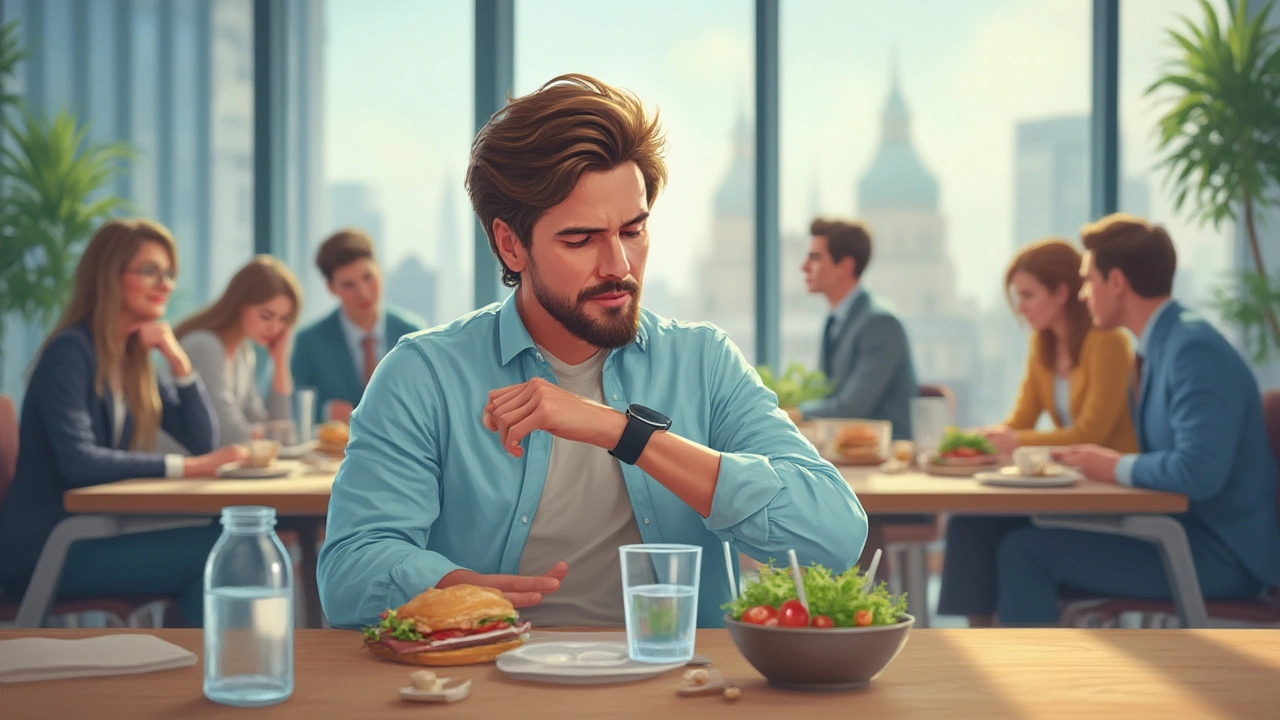Can timing your meds really change everything? If you’re using Januvia, you’ve probably wondered if it’s better to reach for that tiny pill with your morning coffee, slide it in with lunch, or save it for dinner—hoping to sidestep surprise glucose swings or annoying belly rumbles. You’re not alone. Small scheduling shifts might sound like a technical tweak, but they can mean the difference between smooth sailing and bumpy days. Let’s get super practical on when Januvia works best for most folks, what real users are doing, and how you can dodge common pitfalls while keeping your A1C in check.
When Should You Take Januvia for Balanced Blood Sugar?
First thing’s first. Januvia (sitagliptin) belongs to a class of drugs called DPP-4 inhibitors. Its mission? Help your body crank up insulin right after meals and cool off unwelcome blood sugar surges. The official instruction is surprisingly chill: take Januvia once daily, with or without food. That sounds easy, but there’s a catch—real life isn’t always tidy.
Your blood sugar doesn’t only care about what you eat; it gets pushed around by timing, activity, hormones, and even stress. So, locking in best time to take Januvia isn’t just about the clock on the wall—it’s about working with your daily groove and metabolic quirks. Several endocrinologists suggest sticking Januvia into your morning routine, especially if you’re juggling multiple meds or a regular breakfast. This way, you don’t forget, and you’re less likely to double-dose by accident later. Simple habits anchor complex routines.
If waking up is your wild card (maybe you sleep in on weekends or your breakfast window bounces), you can also tie Januvia to your largest meal of the day. That’s where blood sugars tend to take their wildest rides. People who track their numbers with a glucose meter or CGM often see less spiking when Januvia is taken before or with that biggest meal, since the drug boosts insulin at just the right moment.
What about night owls or shift workers? Some folks need to take Januvia at dinner or even bedtime. The key here: consistency. Pick a time you can stick with—your body loves predictability, and you don’t want your pancreas guessing. Avoid too much schedule hopping.
The science isn’t strict: studies show Januvia’s effect lasts about 24 hours, so stability is more important than split-second timing. Still, if you’re working with unusual meal times or a weird sleep schedule, chat with your doctor or pharmacist. They’ve seen every trick and can spot what sounds practical for your case.

Practical Tips to Dodge GI Upset and Forgetfulness
Okay, here’s something rarely said: diabetes meds can mess up your stomach, especially if you’re also on metformin or relying on high-fiber meals. But Januvia on its own is famously stomach-friendly, with less than 2% of users complaining about belly pain or nausea in clinical trials. Still, if you’ve got a sensitive gut, timing matters more than you think. Taking Januvia right before or with food can offer a sort of “cushion” for your stomach—especially if you’ve had trouble tolerating other meds before. Morning or midday, with a snack or light meal, works for most people who do notice grumbling guts.
If you’re just not a breakfast eater and need Januvia in the a.m., take it with a cup of yogurt or a banana—just enough to coat the stomach. Try not to pair your pill with greasy fast food or heavy shakes right out of the gate, which can make anyone queasy.
Traveling? Change in time zones can throw off your med schedule fast. The trick is to keep your doses about 24 hours apart, give or take a couple hours, rather than chasing after “clock time.” Your internal body clock will thank you, and you won’t run the risk of overlapping doses or big gaps.
Hate keeping logs? Set a recurring alarm on your phone—the more boring and predictable, the better. Some people use pill reminder apps or put their Januvia bottle next to their coffee maker, toothbrush, or even their deodorant. It might feel silly, but visual cues beat forgetting every time.
One more hack: if you’re working shifts or fasting (for religious reasons, for example), don’t just skip your pill. Talk with your healthcare provider for a customized schedule—you may need to adjust meal timing, not just the med. You can find more actionable advice and patient stories in this solid guide on when to take Januvia. Real people share how they manage “off-the-grid” routines—worth a look if your life doesn’t fit the 9-to-5 mold.

How Your Routines and Health Status Shape the Ideal Dose Window
Wondering what works for you—not just the average person? Age, kidney health, and other meds all matter. If you’re older or have reduced kidney function, your doctor may lean toward a lower Januvia dose—and while you still only need it once daily, your body might feel the difference in timing. People with chronic kidney disease sometimes report steadier sugars and fewer lows when taking Januvia with a moderate meal instead of an empty stomach. Makes sense, right? Food slows absorption, smoothing out spikes and valleys.
If you split your meds—maybe you take metformin with dinner and Januvia with breakfast—you’re less likely to double up by accident. Pay attention to your “habit chain.” What else always happens near the time you remember your pill? If you always drink coffee at 8 a.m., hitch that dose to your first sip. If you forget until you brush your teeth, that’s your cue instead.
Here’s an interesting tidbit: a randomized controlled trial in The Lancet Diabetes & Endocrinology journal found that patients who linked their DPP-4 inhibitors (like Januvia) with meals showed a slight but consistent edge in post-meal glucose stability versus people who just swallowed their pill whenever. We’re only talking a 5-10 mg/dL difference on average, but for someone on the edge of their target range, that can matter a lot over years.
Curious about the risk of forgetting or double-dosing? Januvia has a safer margin compared to some diabetes meds. If you miss a dose, you’re told to take it as soon as you remember, but not to double up if it’s close to the next one. Accidentally taking two is unlikely to cause a crash, but if it happens often, talk with your doctor. Extra caution if you’re combining it with insulin or SGLT2 inhibitors—then lows can sneak up.
Let’s talk real numbers. See how timing and food can play out in daily blood sugar swings from people tracking their levels:
| Timing | Meal | Average 2-Hour Post-Meal Glucose (mg/dL) | GI Upset (%) |
|---|---|---|---|
| With Breakfast | Full meal | 142 | 1.6 |
| With Dinner | Full meal | 151 | 1.4 |
| Empty Stomach, AM | None/Small snack | 145 | 1.9 |
| Random Time | Varied | 156 | 2.1 |
You can see the differences aren’t huge, but they add up when you’re aiming for tighter numbers. The lowest GI upset showed up with regular, meal-linked dosing.
The takeaway? If you want to stack the odds of happy blood sugars—and a peaceful gut—pick a time tied to food and routine. Live by your own schedule, not the label’s, as long as you keep it steady. And if you’re ever thrown off by travel, stress, or a schedule change, don’t panic. Your body is resilient, and small slips are fixable.






Leilani Johnston
July 17, 2025 AT 14:24